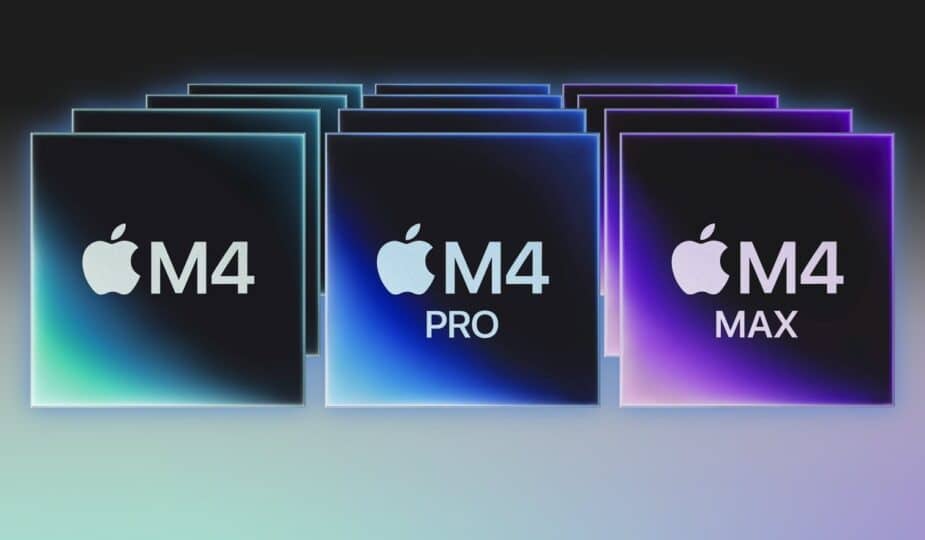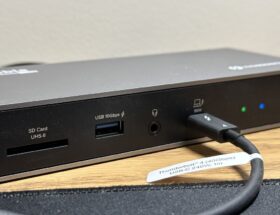M4 is Apple's newest chip. Image credit: Apple
 13 Facebook x.com Reddit
13 Facebook x.com Reddit
Last updated 14 hours ago
Apple Silicon's speed has been steadily increasing since its debut in 2020. Here's how much faster Apple has made its chips in just four years.
Chip generations tend to get better as they age. As designs get better and manufacturing processes get squeezed into smaller spaces, chip performance improves over time.
This is also true of Apple Silicon, Apple’s own proprietary chips used in the Mac lineup, as well as the iPad Pro and iPad Air. Replacing Intel chips has proven time and again to be a great move for Apple, as the improvements impressed customers and resulted in more buyers.
Now that the fourth generation of Apple Silicon is shipping in the form of the M4 series, we have three generational leaps to analyze. We can see more accurately how Apple’s chip lineup has improved since the M1 first launched in November 2020.
Apple Silicon Chip Comparisons
When performing this comparison, we use the Geekbench result lists as our base. Using the latest results eliminates any version changes in the test, so all results should be fair.
There are other issues to consider when using this approach, such as chip releases with core count variations. For example, there are also differences between the MacBook Pro and Mac Studio that can affect thermal management and therefore the results.
There are other factors, too, including the manufacturing process that delivers improvements through smaller die sizes, as well as memory bandwidth upgrades.
To keep things simple, we only use the highest result for each chip in each category to give it the highest potential score.
As for the M4, the Geekbench Mac result list doesn’t include any numbers. However, you can search for Mac models in its database and pull up the results.
For the M4 models, we averaged the numbers that seemed plausible to try to rule out any false or wildly incorrect results.
Changes in Single-Core Processor Apple Silicon
Of the three benchmark results, single-core testing shows the least variance between models. This consistency is largely due to how Apple manufactures versions of its chips.
A chipmaker like Intel can differentiate chip variants within a generation by changing several factors, including core clock speed and core count. Apple aims to maintain roughly the same clock speed across a generation, but it does have the ability to change the core count.
Each Apple Silicon chip can have a different split of cores between performance cores and efficiency cores. But since we know the speed of each core type will be fairly comparable, there won’t be much difference between the M1 and M1 Max here.
Additionally, when running the single-core test in Geekbench, the performance cores tend to be utilized.
Geekbench Single-Core Tests
When comparing by percentage change to the M1 version, we see fairly similar results for each of the base, Pro, and Max chips.
The M2 generation is 11% and 16% better than the M1 in single-core results. The M3 is 29% and 20% better, while the M4 is 63% and 68% better.
For the two Ultra chips, the M2 Ultra is 16% better than the M1 Ultra in single-core testing.
This comparison shows that Apple's updates are fairly consistent across generations when it comes to single-core comparisons. It also shows that there are fairly significant performance gains within each generation.
Changes in Apple Silicon Multicore
While single-core was pretty easy to understand, things get a little more complicated when it comes to multi-core scores.
The problem here is the “Multi” prefix, as it means that all the chips in the CPU are under load. With more cores, a chip can score higher.
However, Apple hasn't been entirely consistent in how it distributes its performance and efficiency cores.
On the lowest-end 8-core CPUs, it typically splits them evenly, with four each. On a more powerful Max chip like the M3 Max, it might have a small set of four efficiency cores, but then fill the other 12 spots with performance cores.
The inconsistency comes with the M3 Pro generation. The 12-core M3 Pro is configured with six efficiency cores and six performance cores.
This is odd, as the 8-core M3 and 16-core M3 Max each have four efficiency cores and the rest are performance cores. The equal split means the M3 Pro doesn’t have as much CPU performance in multi-core testing as usual.
Geekbench Multi-Core Tests
Looking at the numbers, adding more cores makes the differences more pronounced in percentage terms. The M2 generation is typically 16-17% better than the M1 in multi-core testing.
As for the M3 generation, the M3 is 39% better than the M1 and the M3 Max is 66% better, but the M3 Pro is only 24% better. Again, the M3 Pro is an anomaly for Apple Silicon.
The M4 is again significantly better, reaching 70% better than the M1 for the base tier, 84% better for the Pros, and 111% better for the Max chips.
And again, the M2 Ultra is 17% better than the M1 Ultra.
GPU Changes in Apple Silicon
When it comes to graphics performance, we turn to the Metal test results in Geekbench. Just as multi-core performance is based on clock speed and core count, GPU performance is based on the same things.
However, the number of GPU cores can increase significantly depending on the variant.
For example, the modest base model M1 has a maximum of 8-core GPU, the M1 Pro has a 16-core GPU, the Max has a 32-core version, and the Ultra goes up to 64 cores.
Similarly, the M4 starts with 10 cores for the GPU, increasing to a maximum of 20 cores for the Pro and a maximum of 40-core GPU on the M4 Pro.
Clock speeds and other graphics enhancements can also affect the results.
Geekbench Metal Tests
Comparing the results with the M1 counterparts, the Geekbench numbers say that the M2 is 41% better than the M1, the M3 is 45% better, and the M4 is 75% more powerful than the original.
The Pro models see a 22% improvement over the M1 and M2, but the improvement seems to drop to 17% for the M3 compared to the M1. Oddly enough, the M4 Pro's GPU is only 3% better than the M1's, at least according to the results.
This seems to be an oddity with the Geekbench results at some point, as they should be much higher. Since the results are updated regularly, it's possible that these numbers could correct themselves within a few days.
At the end of the Max, things are pretty much back to normal. The M2 Max's GPU is 26% better than the M1 Max, the M3 Max is 35% faster than the M1 Max, and the M4 Max is 69% better.
On the Ultra chips, the M2 Ultra's GPU is 38% better than the M1 Ultra version.
Constant improvements
Every time Apple introduces a new generation of Apple Silicon, it is touted as the best version. Faster cores, more cores, and better graphics every year.
It is clear from the Geekbench listings that Apple is delivering on its promise.
At least if you ignore oddities like the M3 Pro's split CPU cores and the Pro model's GPU results. The former can be explained by Apple's decision, the latter is likely a results issue rather than an Apple problem.
What is certainly clear is that Apple makes significant improvements with each generation of its chips, regardless of the variant.
We can expect the M5 to be about 20% better than the current M4 chips when it eventually arrives. That is, if you base the results on what each generation of chips brings to the table over the previous one in these numbers.
Apple could go crazy and offer something completely different next generation. More cores, different splits of performance and efficiency cores, new GPU ideas — all of these could impact performance.
It could do that, or it could stick with more incremental improvements. Either way, whatever happens next should be Apple’s best yet. As usual.
Follow AppleInsider on Google News










